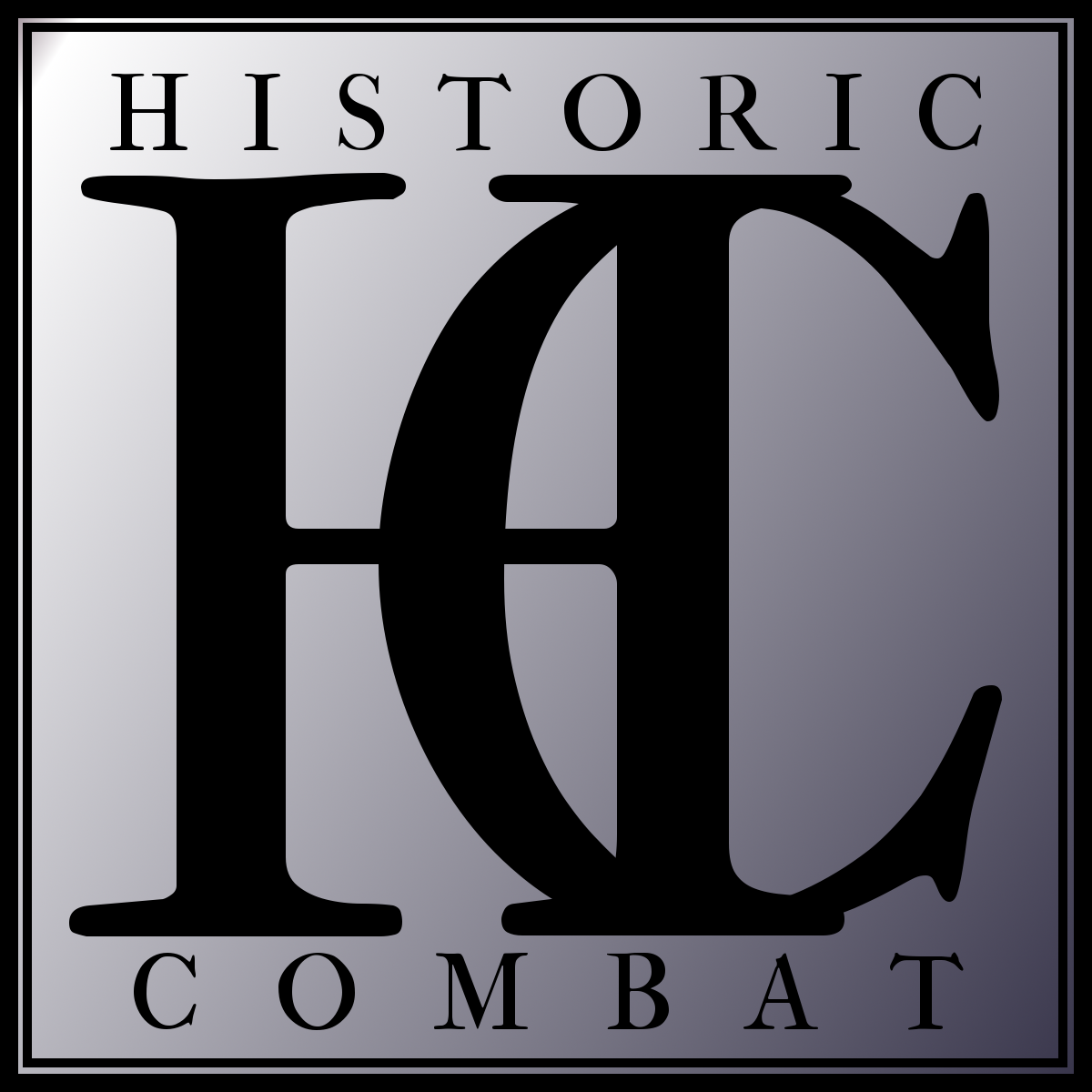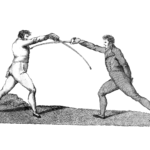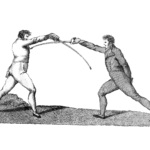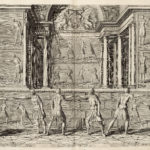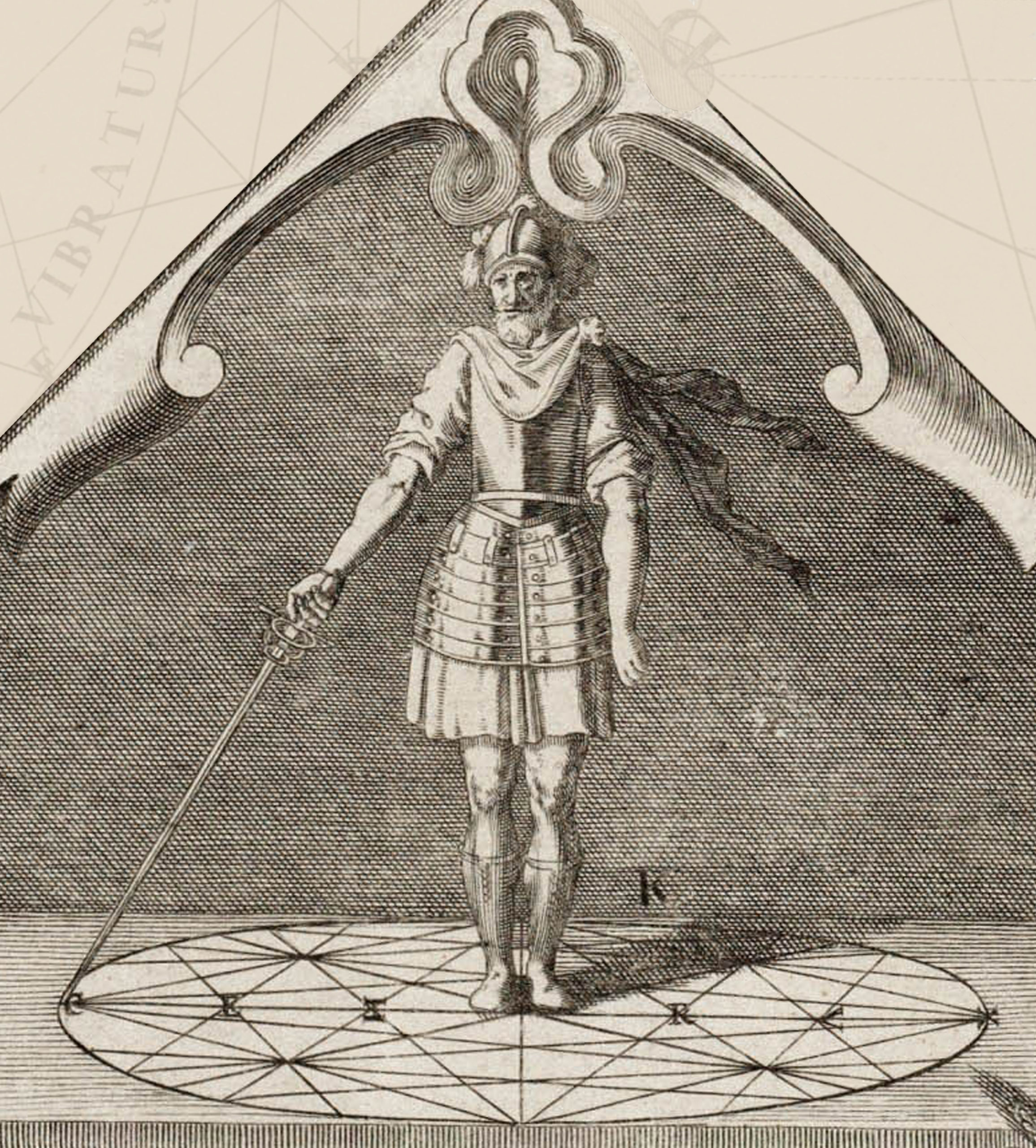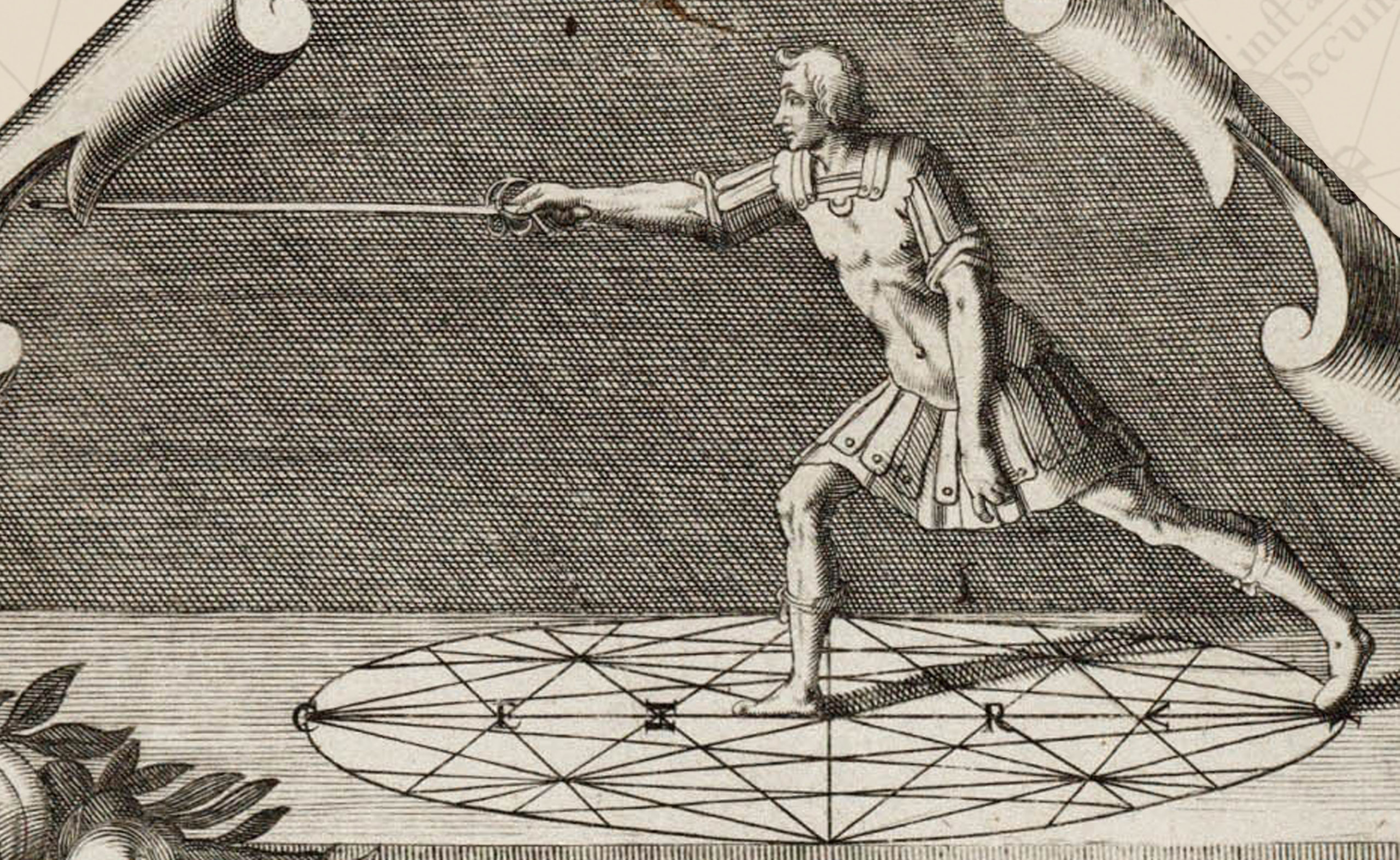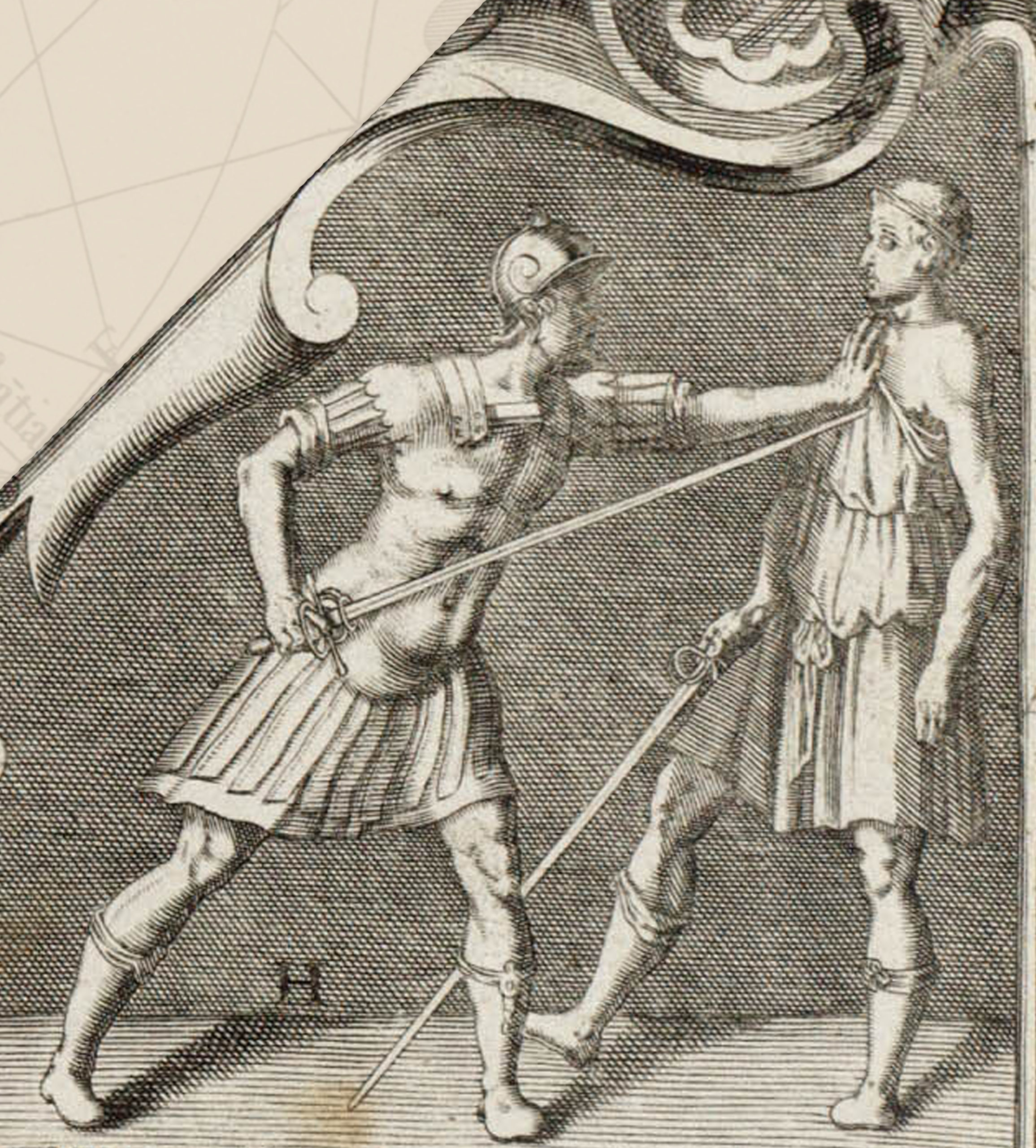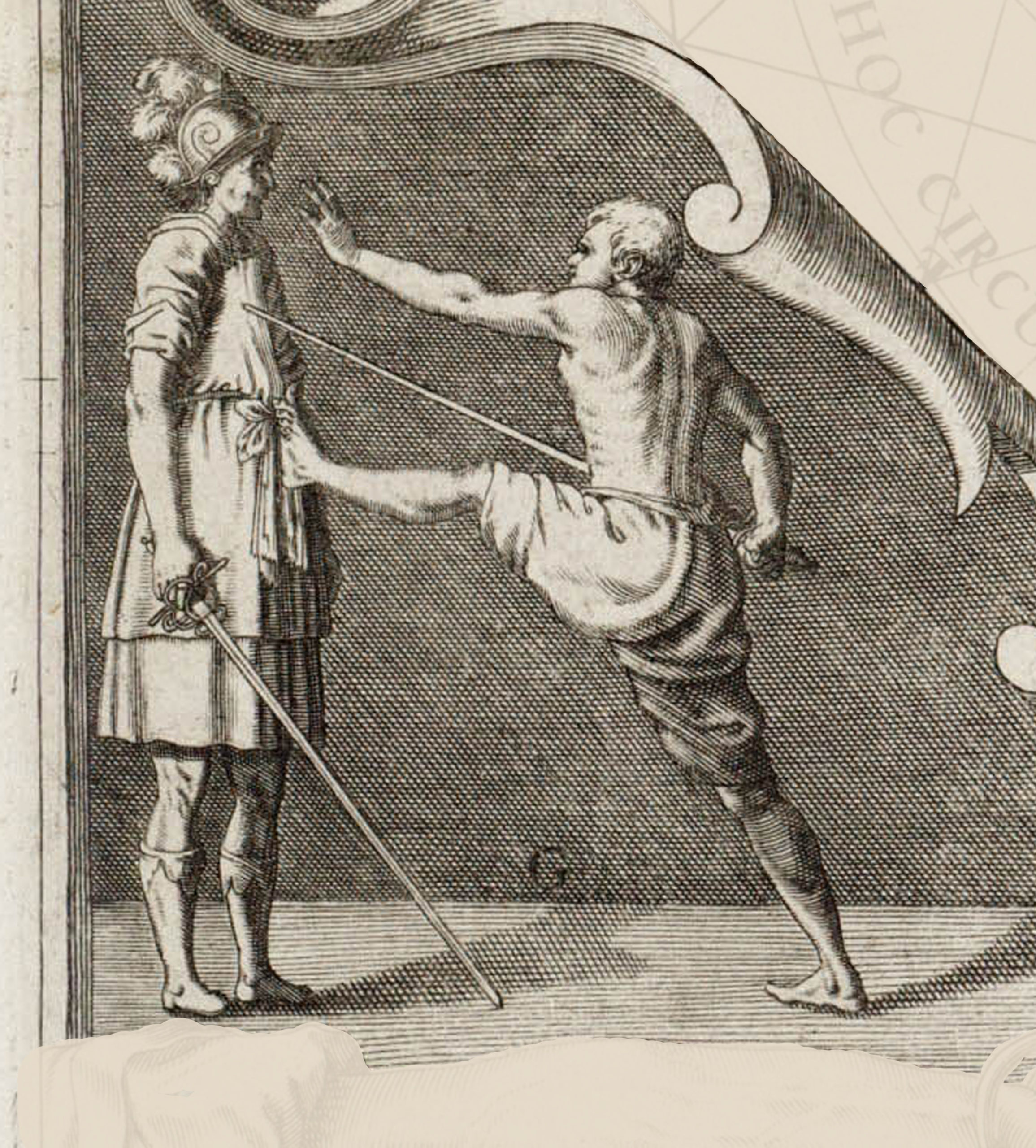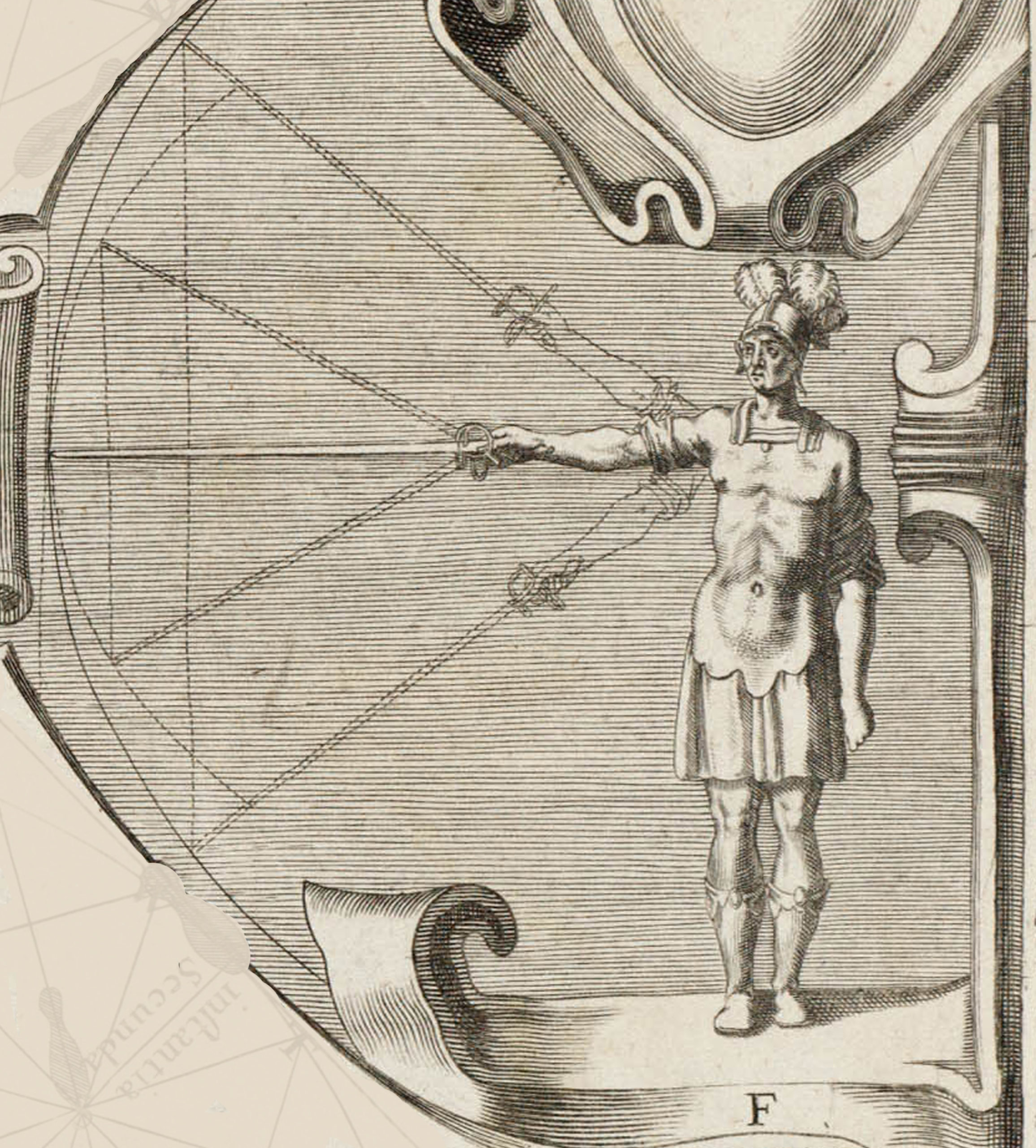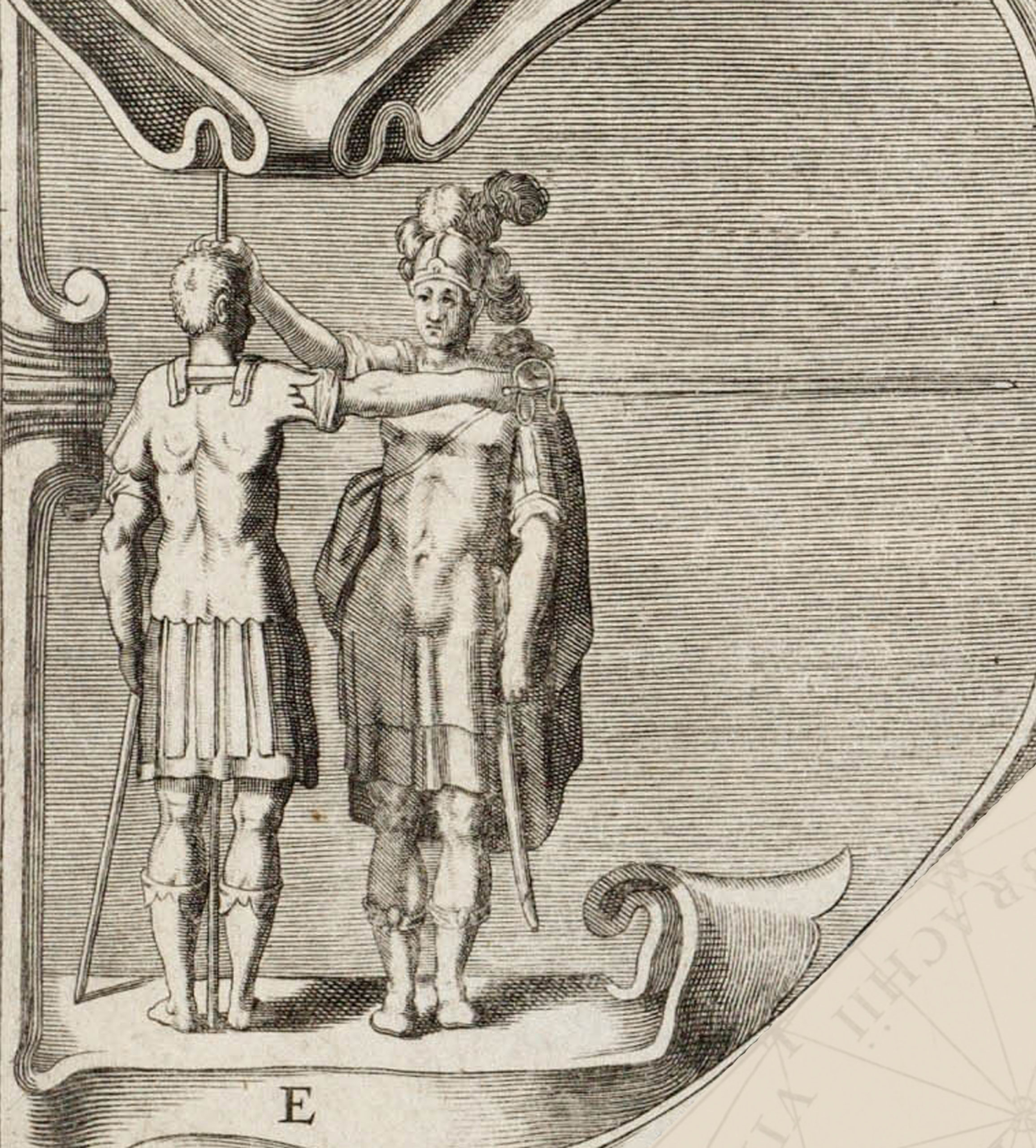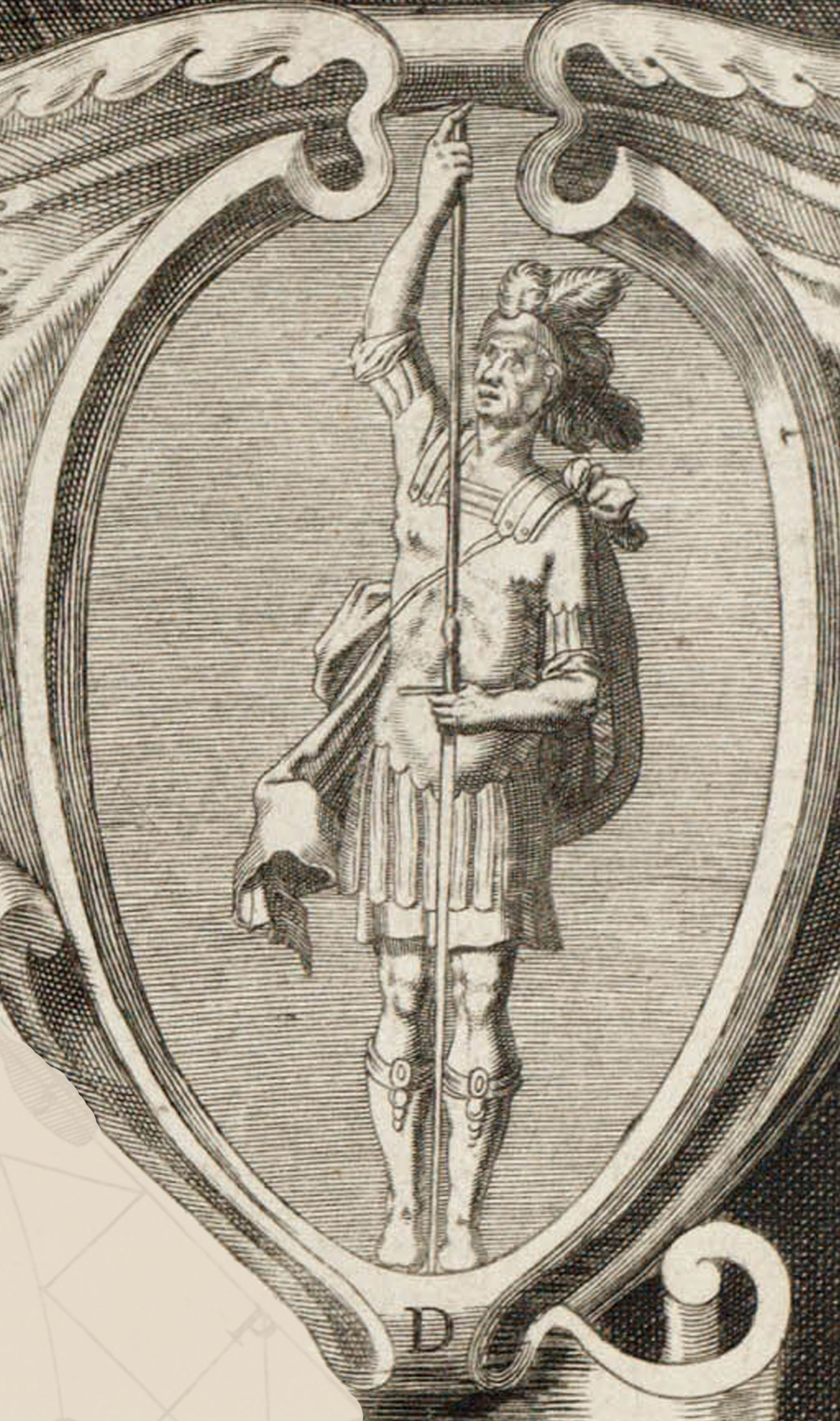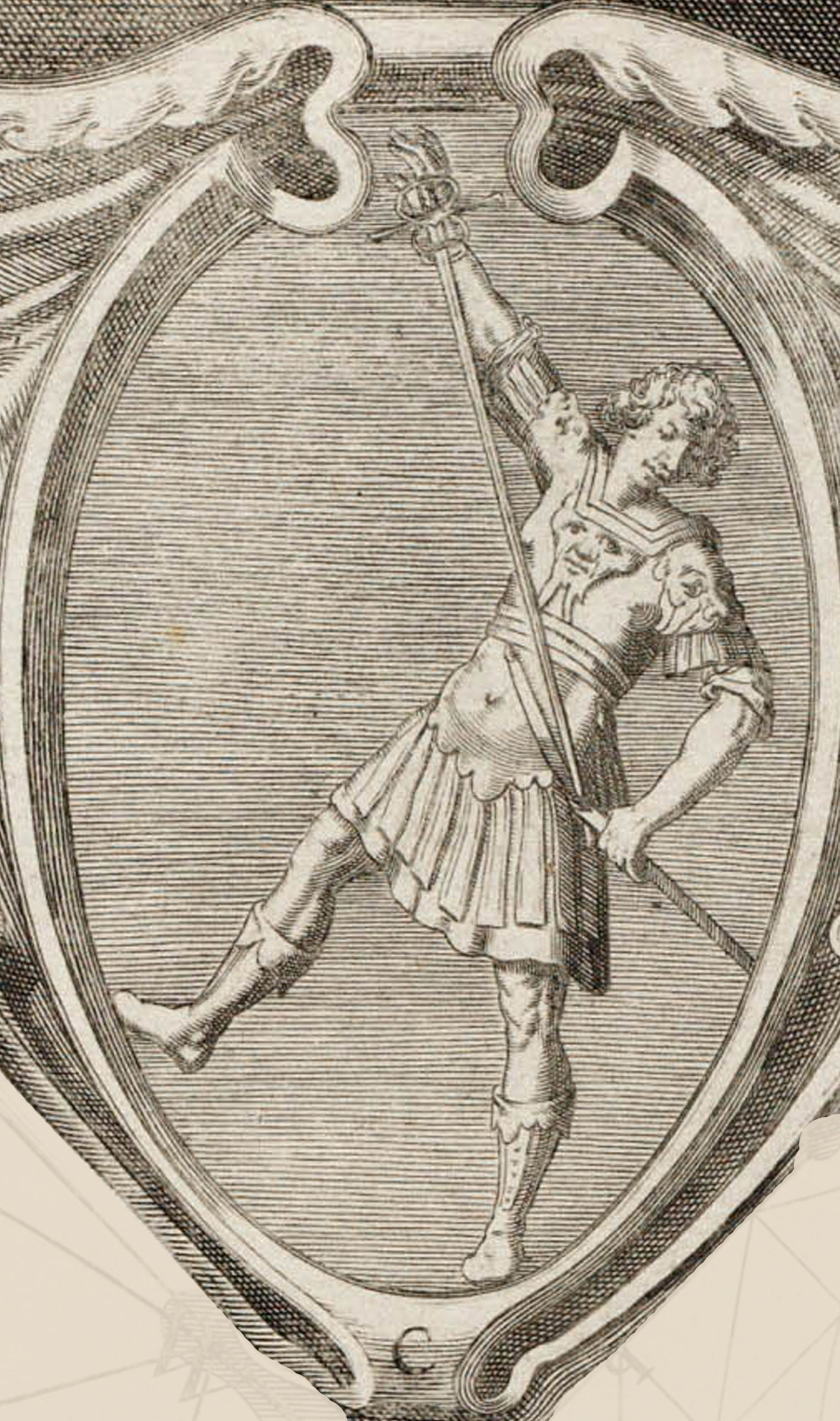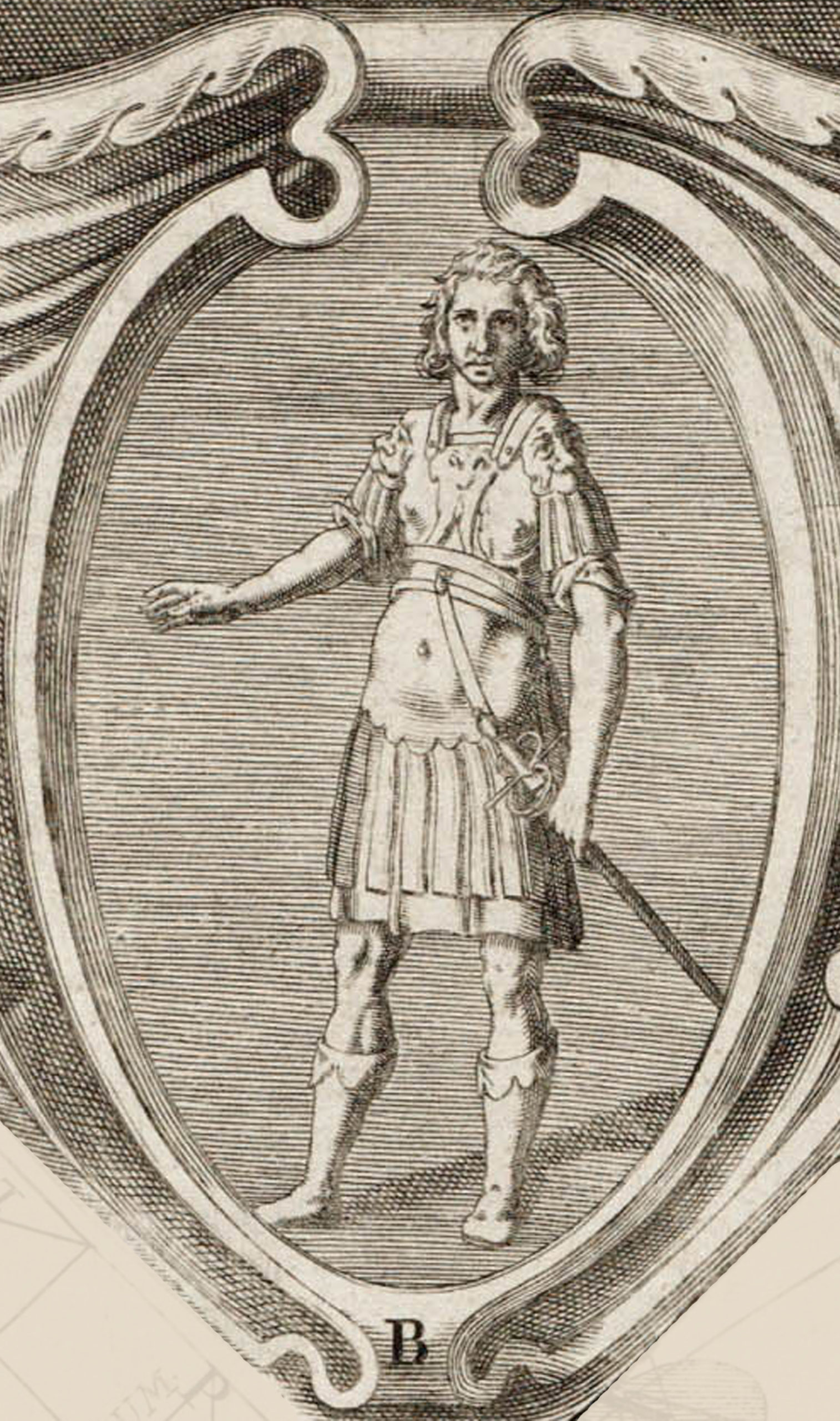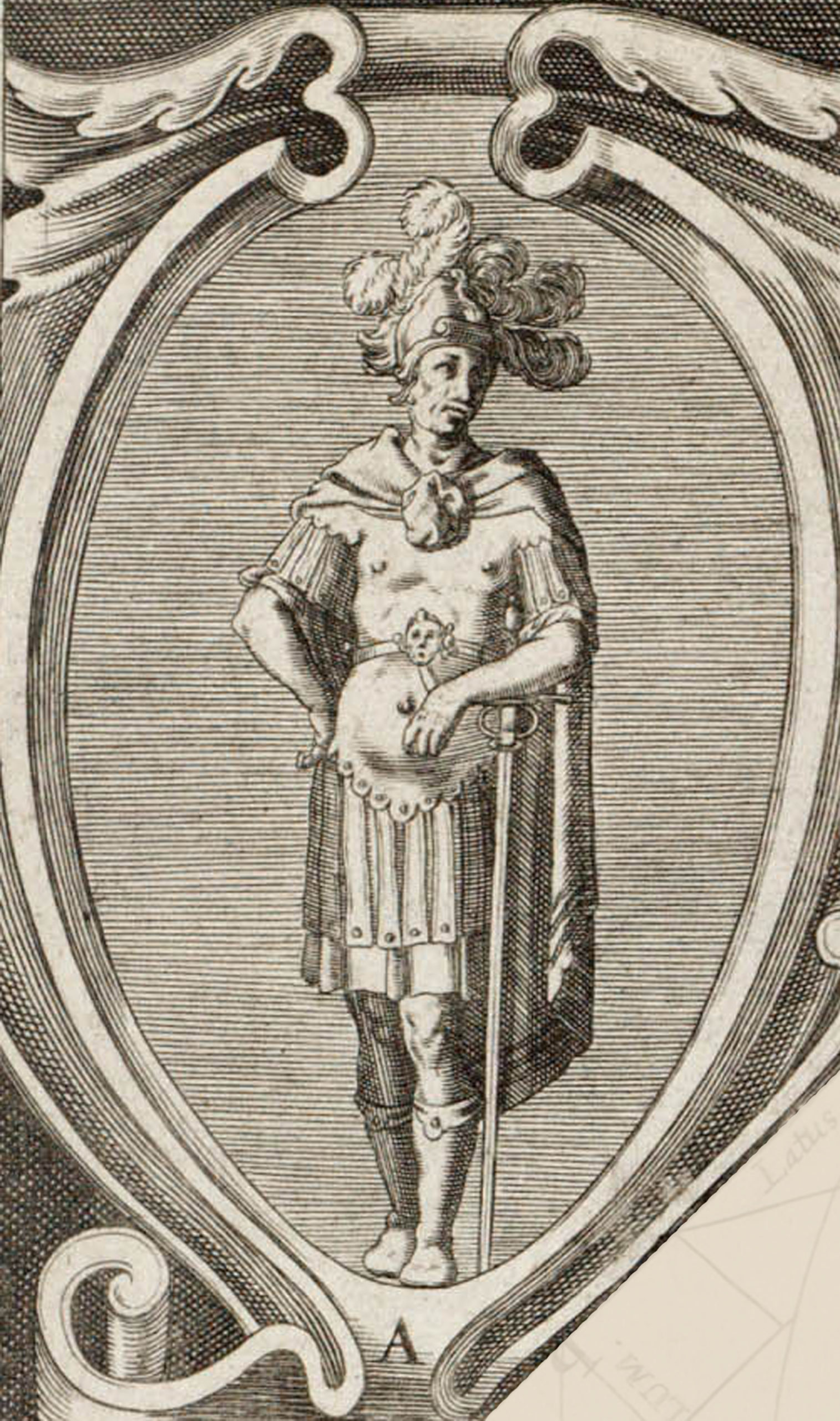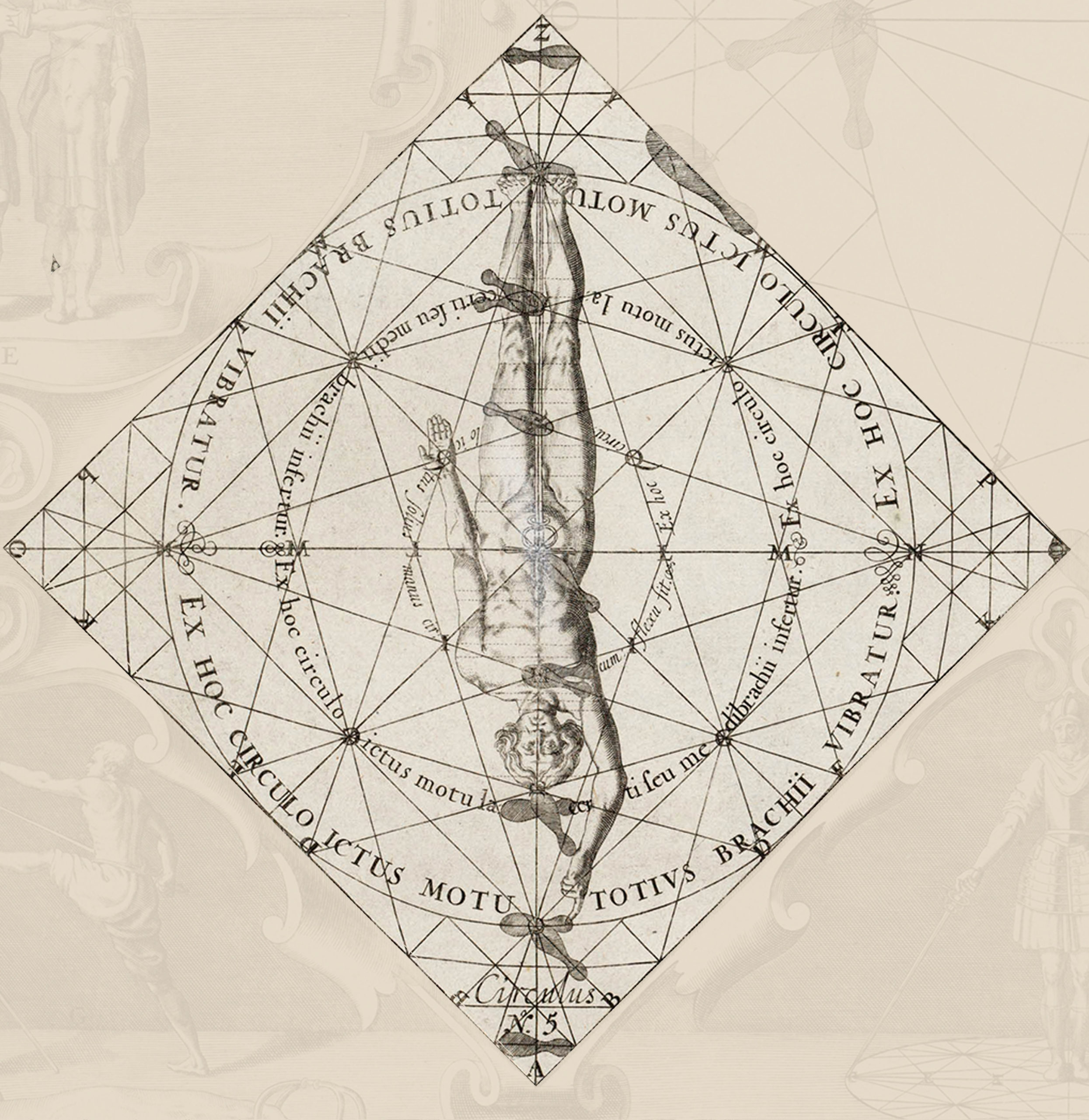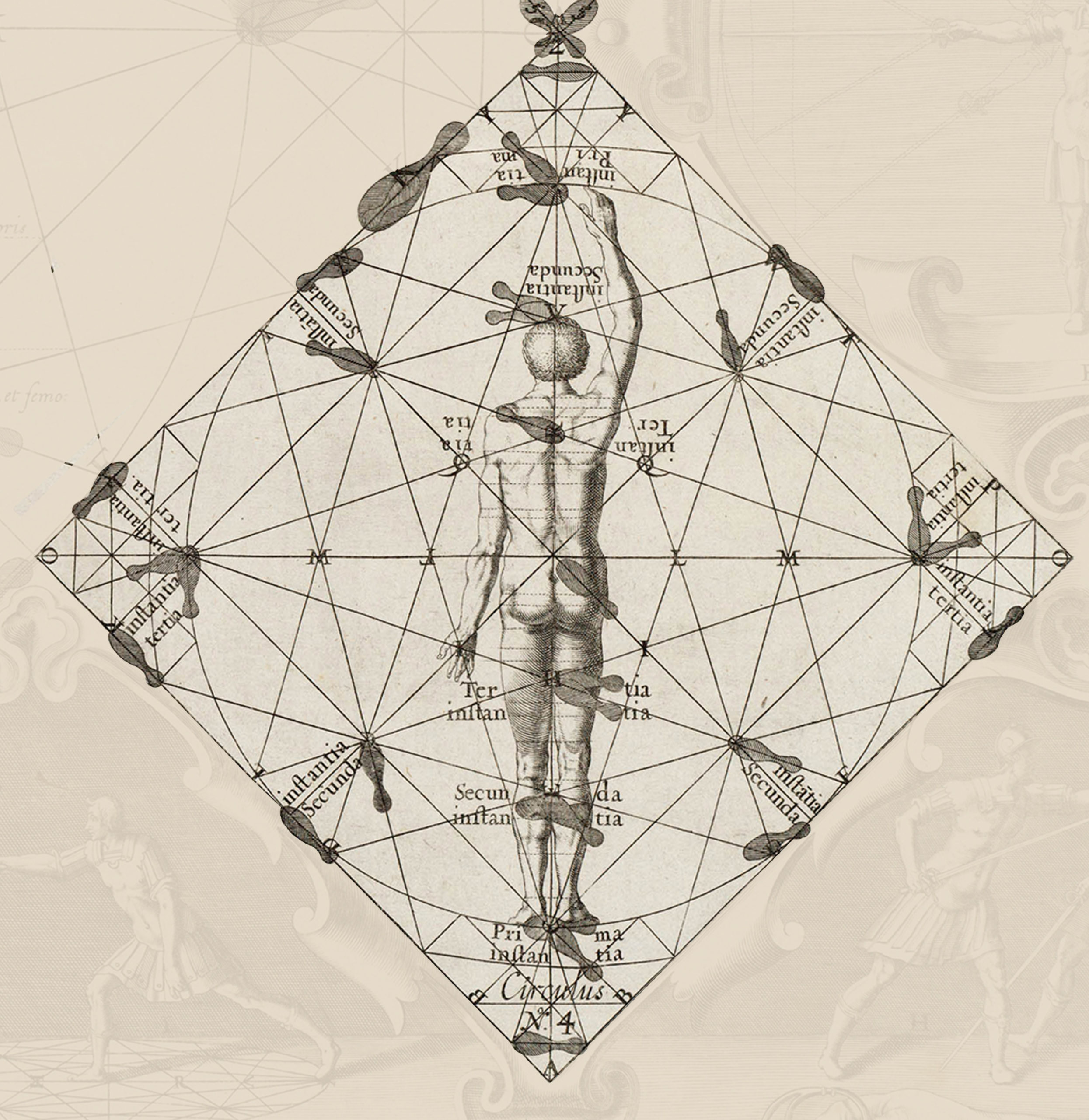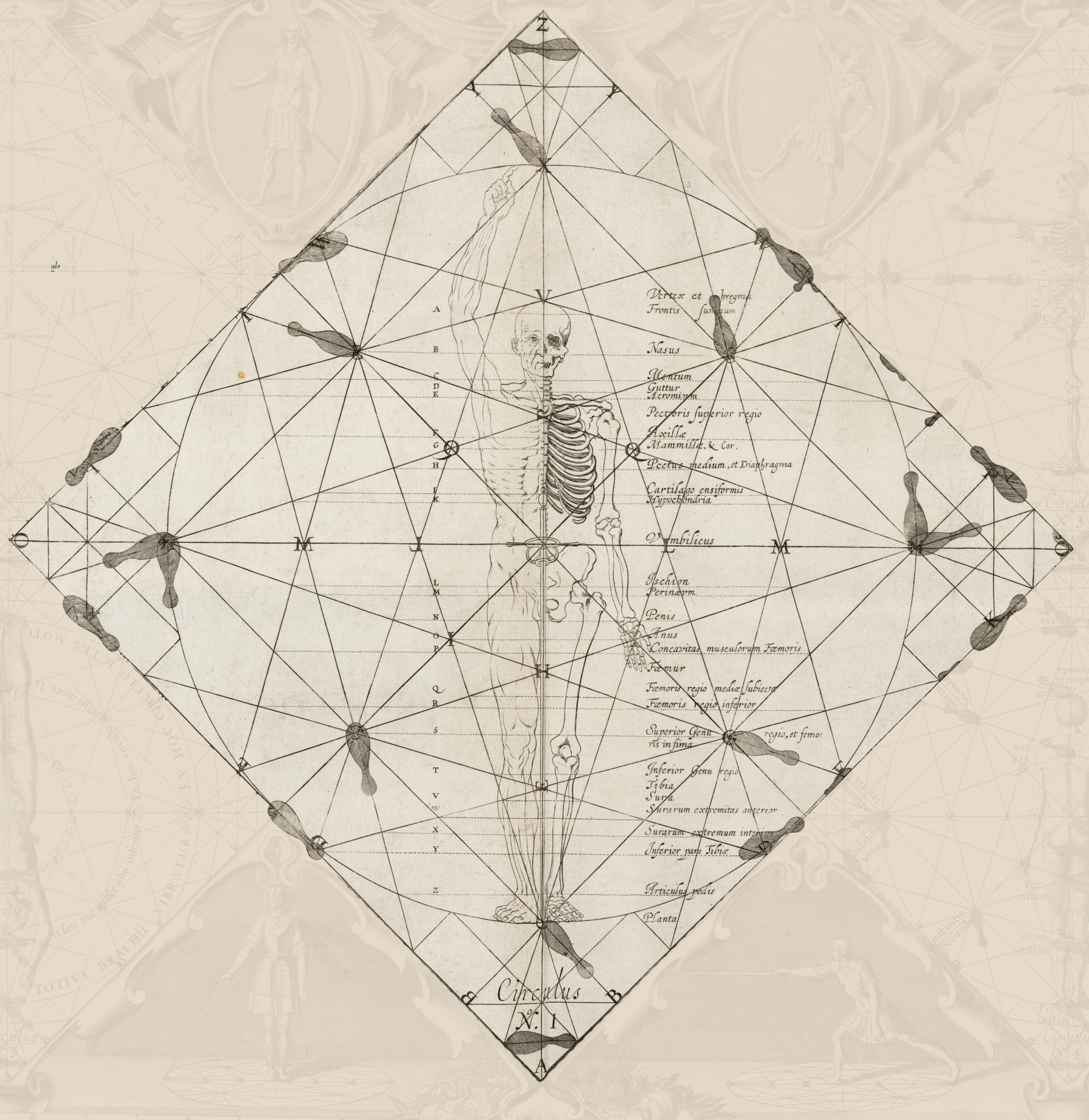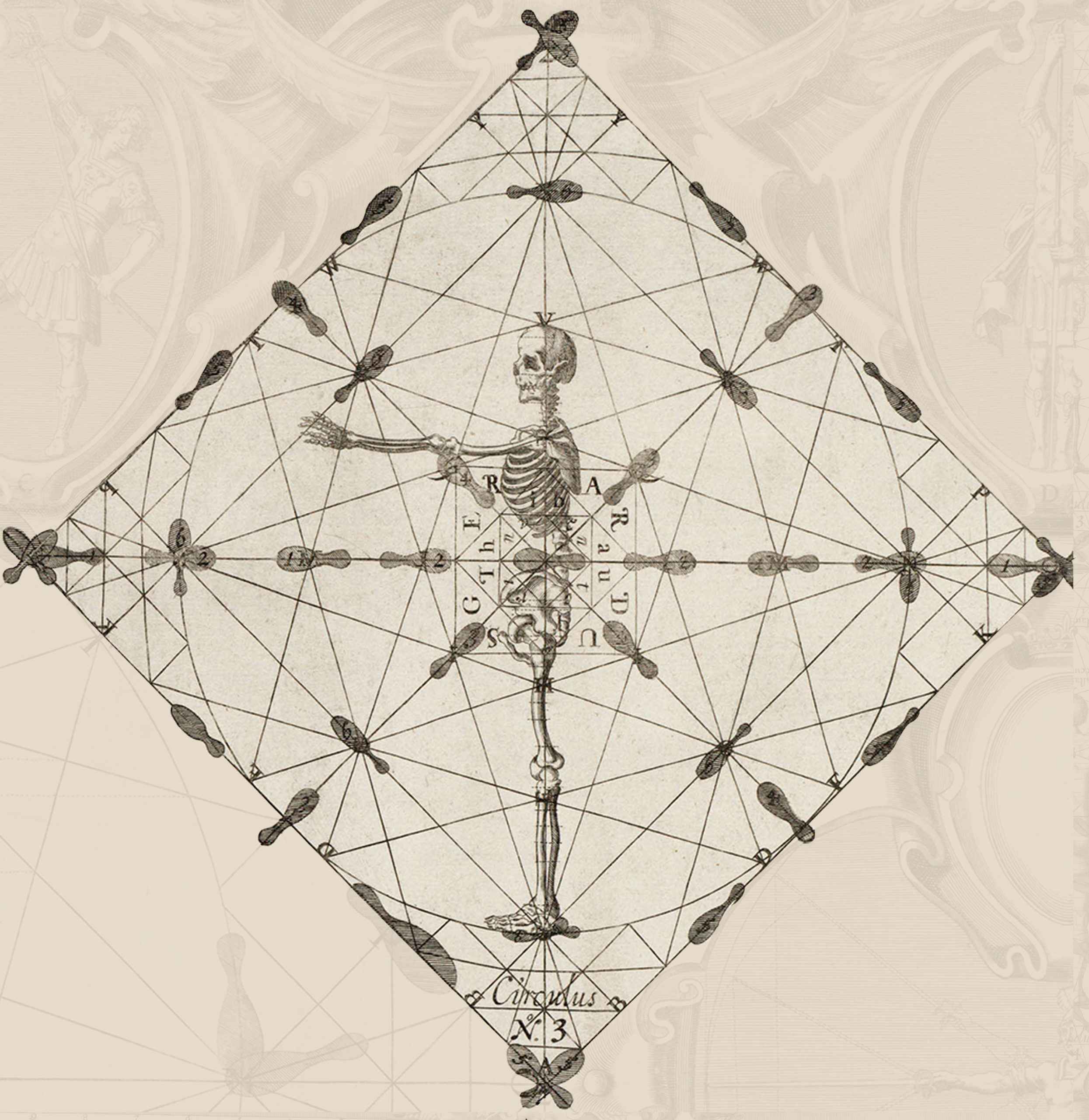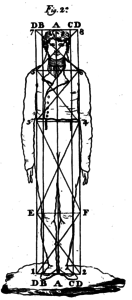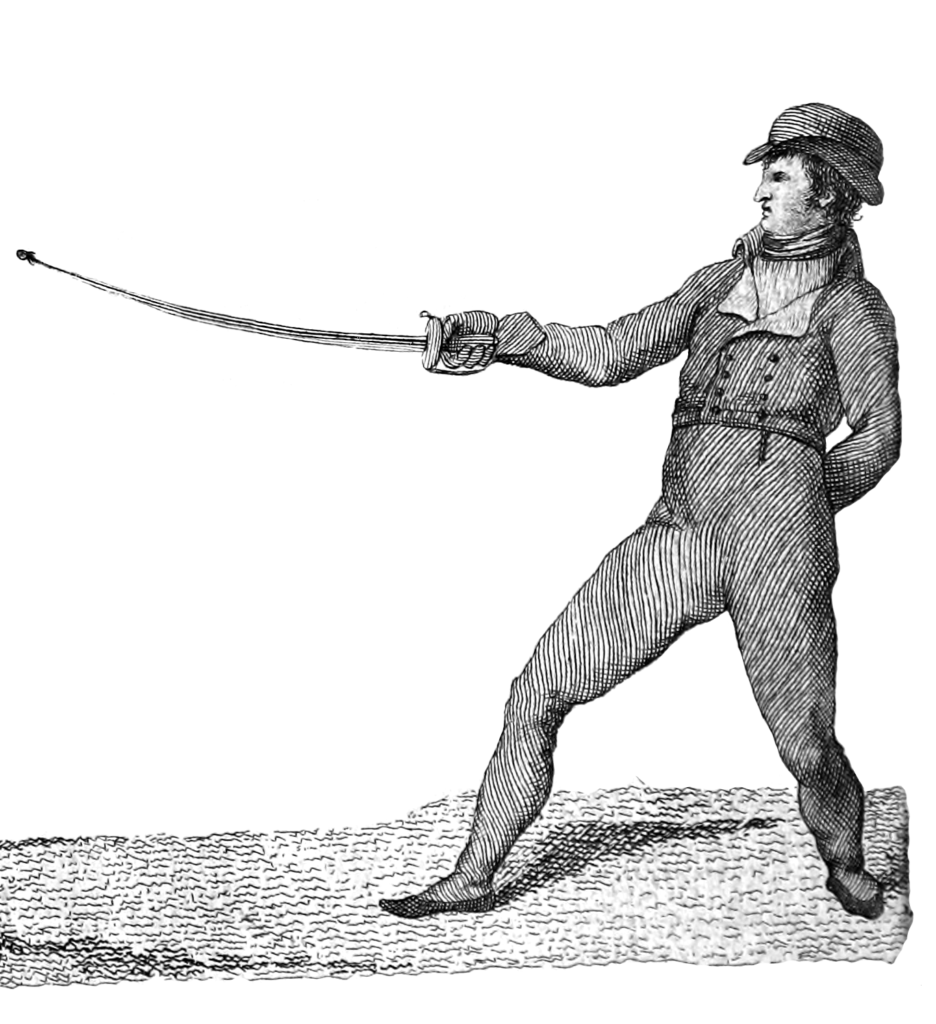383. Although the main purpose of this treatise is to give rules for self defense, as it is often linked to the offense of the enemy, it is necessary to be well versed in the points that the adversary presents in each of the wounds that they try to achieve, to attack them after repairing their offenses, achieving or removing the possibility of trying another, or at least to make understood the caution with which you must manage the battle against a skillful hand. To offend or constrain the enemy it is also necessary to be well versed in the points that each offense presents for reply. It is equally important to know those which can be directed corresponding to those you are seeking. Therefore, I will deal with them in the same order as I did in the third and fourth parts of this treatise, where I explained the points that the removals uncover.
Points Uncovered on the One Who Throws a Thrust of Fourth
384. The points that are uncovered on this thrust, and that the one who repairs it can attack are, second by the sabre, thrust of fourth leaving the line on the right side or on the left with engagement of the weapons. If the removal of fourth with which the thrust was repaired is holding the sabre, leaving the line at the same time on the right side, you will have enough points to execute a half reverse to the arm or neck, vertical cut or diagonal to the head, separating from the opposing sabre to form the shots stated above, retiring or withdrawing immediately. Although the left side and thigh are uncovered, there being no facility to hurt these points with good opposition, and since they are very distant, it will be prudent not to attack them.
Points Uncovered on the One Who Throws a Thrust of Third
385. The one who throws a thrust of third presents points to inflict in response. One of first by the sabre, and leaving the line on the left side you can throw one of second separating from the other weapon. But if your leaving on that side is made at the same time as the offense, the removal with subjection, you can inflict a half cut to the neck and a vertical or diagonal to the head or arm, separating your own sabre from the contrary’s and forming these shots above it, retiring in the execution.
Points Uncovered on the One Who Throws a Thrust of First
386. The thrust of first uncovers on the one who throws it, enough points for one of third by the sabre, after repairing with sixth, executing it over the arm of the contrary. But, leaving the line on the right side, for a thrust of first with the hand in third or in fourth; for the counter edge in the armpit or the ark of the arm if the line is left at the time of the removal, and retiring in the execution; and forming by the point, for the vertical cut in the arm, in the head, and the diagonal in the face.
Points Uncovered on the One Who Throws a Thrust of Second
387. This thrust uncovers points on the shot where you can reply with one of second by the weapon; one of fourth carrying from the removal of fifth with which you repaired the enemy; and, leaving the line on the left side at the time of the remove, for a counter edge blow, making a prompt retreat; for a vertical to the arm; half reverse to the neck; and vertical or diagonal to the head, all formed below the guard.
Points Uncovered on the One Who Throws a Cut to the Head
388. In the execution of a cut to the head, being vertical or diagonal, points are uncovered inside for: after repairing with high fourth, inflicting a thrust to the face by the sabre, or for a counter edge blow to the arm; and on the outside for a cutting wound to the head, arm, or flank, formed by the point. But for the latter, it is necessary to leave the line on the left side. But, if you bring the sabres to low fourth, in this case without having to leave the line, you can throw a second by the weapon.
Points Uncovered on the One Who Throws a Reverse to the Head
389. When a reverse is directed to the head, the one who throws it uncovers with his execution, points to inflict a thrust of third by the weapon from the removal of high third with which it was repaired. Leaving on the left side, a thrust of second, or without leaving a half reverse to the arm. But, if the exit is on the right side, you can throw the vertical and diagonal cuts to the head, shoulder, or flank, formed by the point. But, if you make the sabres come to low third you can, without leaving the line, execute a first by the sabre. If the cuts and reverses explained in this paragraph and the previous one are directed to the flank, the points that the offender uncovers are the same as when they throw the thrusts of first and second (§§ 386-387).
